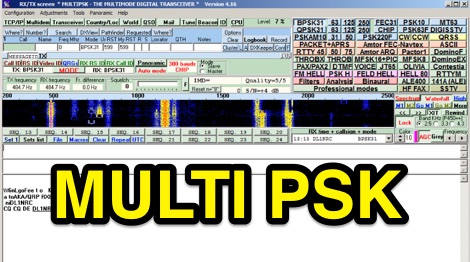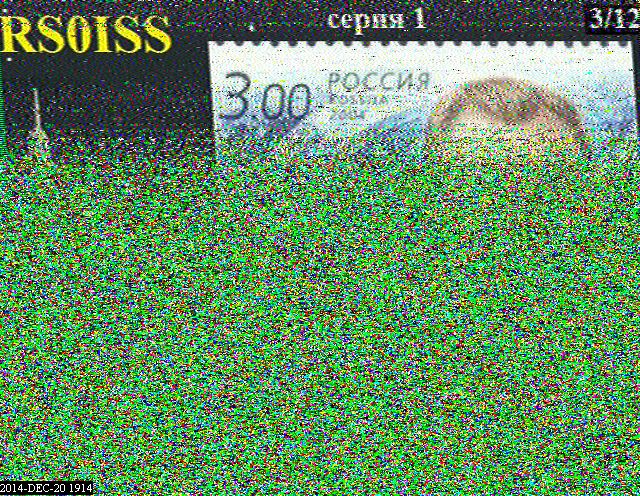
Using Winwarbler I could send PSK31 and using MMTTY I could send RTTY. Everything you mentioned in your 3rd sentence was set correctly. Well Rich, when all else fails blow everything away and start over. Thanks for commenting and your information, I appreciate it. If you don’t have any problems, stick with it OFF. The default OFF works for most everything and having it ON doesn’t seem to affect much but a couple of programs that I’ve seen. There was another too, but I can’t think of it now. The CI-V Echo back is needed for some of the programs I am using. I ran no ALC for a long time on the 7300 and I made a lot of contacts and got good reports which I am sure you are getting.

No doubt settings will vary from station to station. I also noticed the 7300 still has a little fluctuation in ALC when going from 20 watts to 70 watts using the RF Power (MULTI) knob.
#FLDIGI SSTV MOD#
I needed to adjust the USB MOD Level to 40% or a little more to achieve what I was doing with the 7610 at 30%. Just before the article posted I was testing the 7300 settings and it is a little different than the Icom 7610. I will do my best to answer it and your experience will undoubtedly help others as well. If you have a question please comment below. Thank you again for coming by and I appreciate all of the comments.
#FLDIGI SSTV SOFTWARE#
Some Hams will prefer to use the software and some will like using the MULTI knob on the transceiver.

You may still prefer to use the RF power slider in the software like many Hams and there is nothing wrong with that. There are different ways to adjust the RF power, but if you want to maintain a consistent ALC, try this method. Others report 1/3 scale is best for them and they maintain a clean signal. Some Hams have reported the Icom 73 can still maintain a clean signal with the ALC at max of the ALC scale. Your setting for the USB MOD Level may differ slightly to get the optimum ALC for each software program you use. The video below covers everything in this article and shows an example of good and bad signals using the Icom 7610 Audio Scope.
#FLDIGI SSTV MANUAL#
This is the beauty of this method and according to the manual and the Icom experts having ALC within the ALC zone is not a bad thing, but really what we should be looking for. It doesn’t matter if you run 10 watts, 50 watts or 100 watts, the ALC will be consistent. To adjust and set the RF Power just use the MULTI knob on the Icom 7300 and Icom 7610. Like WinWarbler, Fldigi doesn’t have a visible RF Power slider.
#FLDIGI SSTV WINDOWS#
It uses the Windows Speaker Levels setting in the USB Audio CODEC. WinWarbler doesn’t have a visible RF power slider like WSJT-X and DM780. Adjust it for within the ALC zone while transmitting. The slider is almost to the top of the scale. Ham Radio Deluxe DM780 Soundcard TX Level We won’t need to touch this again unless there’s a change in the radios USB MOD Level or the Windows Speaker Level in the USB Audio CODEC. This puts my ALC at approximately 1/3 scale in the ALC zone on the radio when I transmit.Īdjust yours when tuning (using the Tune button) and keep the ALC in the ALC zone. My slider is almost to the top of the scale.

We will only use the Pwr slider in WSJT-X to adjust and set the ALC. In Windows Right-click the Speaker icon in the Windows taskbar, select Playback devices, double-click the USB Audio CODEC, select the Levels tab and adjust the Speakers to 50.Īll of these adjustments are in the video below. This 50 works great with all the software I use for digital modes. One more important setting for those using Windows machines. Mine is normally around 30% and I get 30 watts output. Rotate the MULTI knob and set you RF power to the desired setting. Push the MULTI knob and select RF POWER with the touch of a finger. Using this method the ALC will stay the same whether running 10 watts, 50 watts or 100 watts. This is where the RF power is adjusted and it’s the only setting needed to increase or decrease RF power output. In the Icom 7610 go one menu deeper to MOD INPUT.

In the 7300 it is in Menu>Set>Connectors.


 0 kommentar(er)
0 kommentar(er)
